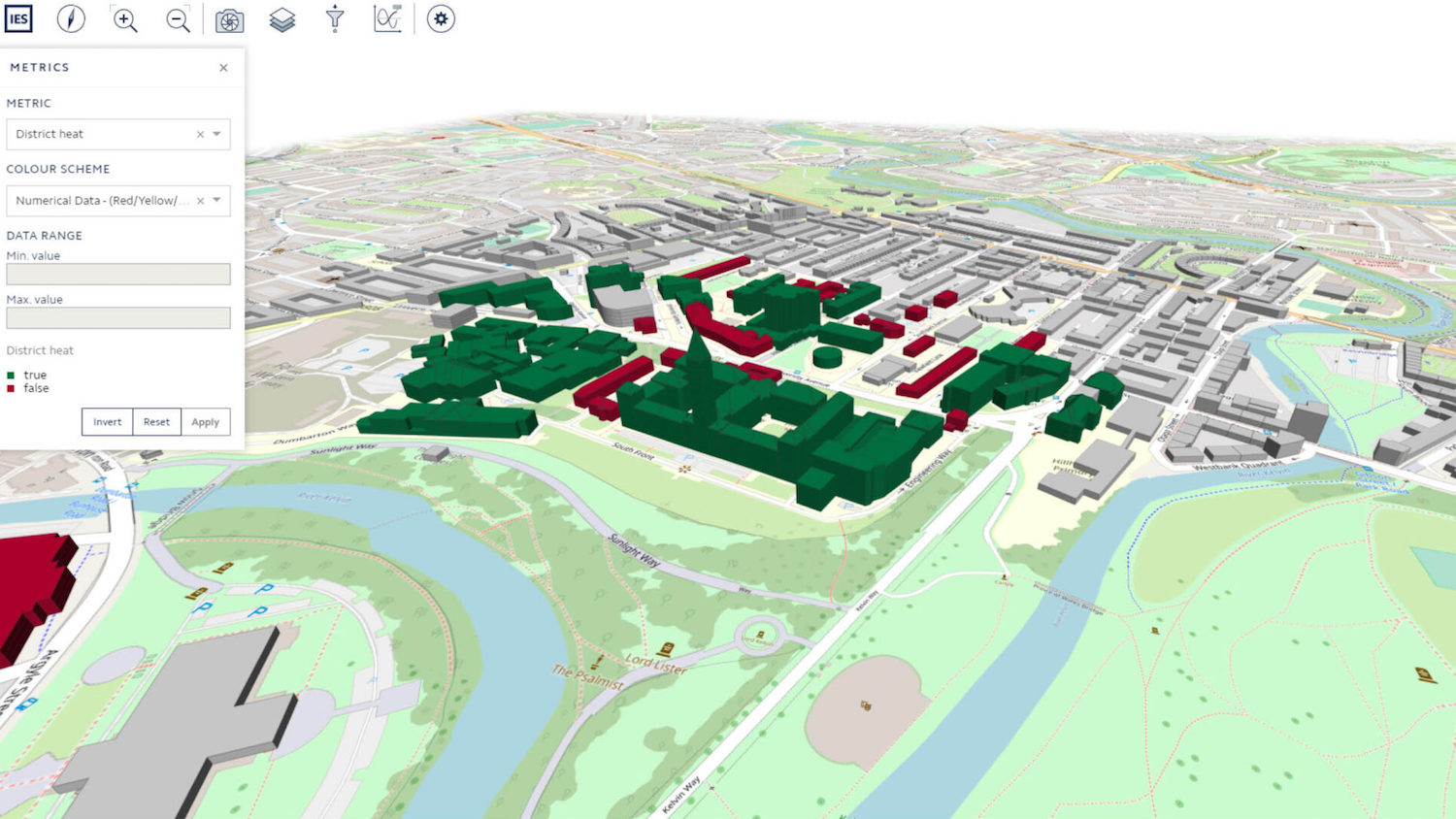
Digital twins of three buildings at the University of Glasgow have been used to assess how compliance models can be used to improve building performance.
With funding from Innovate UK, a team comprising the University of Glasgow, net-zero technology specialist IES and HLM Architects created digital twins of the James McCune Smith Learning Hub (JMS), built in 2021, and the Advanced Research Centre (ARC), completed in 2022. A digital twin was also created of the university’s 55-year-old library.
Compliance models are created at the design stage to assess aspects such as energy performance and environmental rating. However, they cannot reliably predict real-world building performance in a useful way, according to IES. The project used compliance models for the three buildings at different stages of their lifecycle and created calibrated models. From those, it created the detailed digital twins.
These digital twins enable accurate predictions of a building’s operational performance while repurposing existing models for further use.
Predicted energy savings
For the JMS and ARC buildings, building information models were created. These were then converted to energy models by the engineers, using dynamic simulation modelling software. The models ensure the buildings will comply with the relevant industry standards for energy performance.
The compliance models were then updated to include information on each building’s energy-usage patterns, as well as unregulated loads that had not been considered originally. Occupancy profiles based on building use were also added and small power electrical equipment loads were investigated.
Data collected from the building management system and design profiles, such as equipment efficiencies and lighting loads, were then added. The resulting models were calibrated to create building-performance digital twins.
For the library, a geometry model was created based on an existing model and an energy audit was carried out to create a thermal template. This gathered information on the energy heat and flows, as well as the schedule for heating controls, domestic hot water consumption and heating set-points and set-back temperatures.
A calibrated model was then created using information from the energy audit. Using the resulting building-performance digital twin, three scenarios were tested for improved performance. These were: adjusting start/stop times and closing upper floors during low-occupancy periods, a basic electrical retrofit and HVAC equipment upgrades.
The digital twin predicted reductions of 15% on energy and carbon emissions, with 9% reductions for the electrical retrofit and 23% for the HVAC upgrades. The University of Glasgow hopes to begin the first scenario and consider the other two options alongside a range of other campus-wide energy-saving initiatives.
Performance digital twins
The pilot project and insights from the campus building models will be used to drive recommendations for better performance management.
Ruth Kerrigan, chief operating officer at IES, said: “Many valuable insights have been derived from this project which we hope will help to improve the way that building performance is measured and demonstrate the role that digital twins can play in facilitating this change.
“Better measurement and verification for building performance is desperately needed if we are to decarbonise the built environment. Operational efficiency and performance metrics need to be considered at the earliest possible stage in a building’s lifecycle to prevent the need for costly interventions and reduce the performance gap between design and operation.”
She added: “Currently, calibrated models created during the design stage are not used in any further stages of the building’s development, and just aim to facilitate the meeting of minimum performance standards. This results in inaccurate performance predictions and will not provide the sustainable outcomes that building owners want and need.
“Performance digital twins provide invaluable, accurate insights into a building’s performance. They can be used, as demonstrated in the project, to help building owners achieve better energy efficiency, reduce carbon emissions and future-proof their buildings.”
Don’t miss out on BIM and digital construction news: sign up to receive the BIMplus newsletter.













